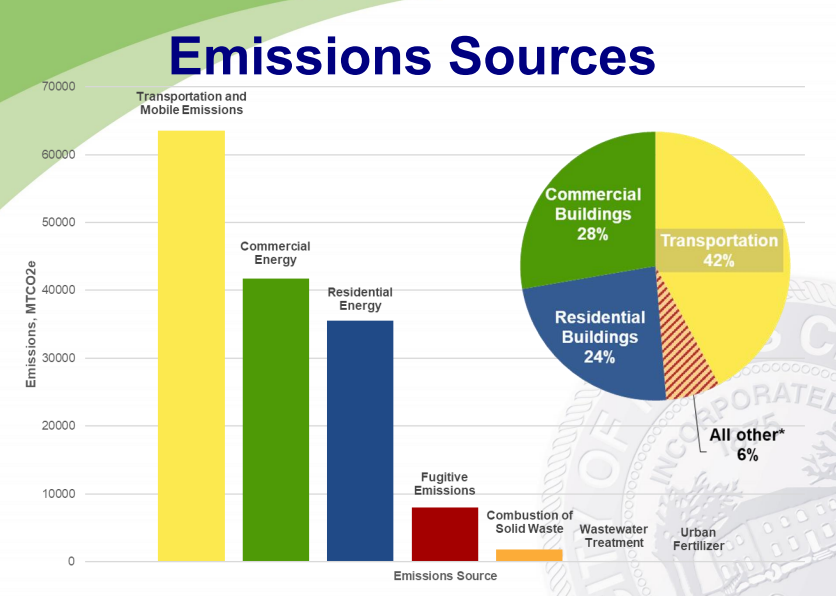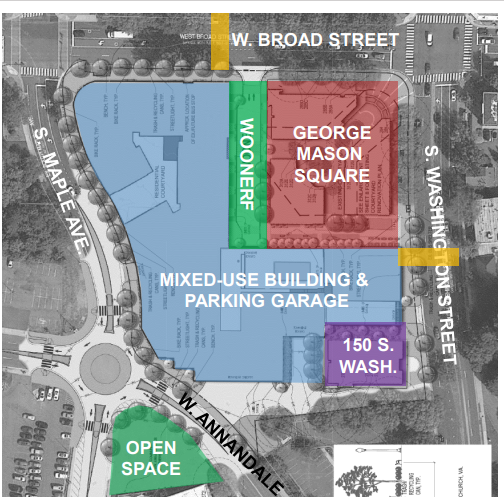Updates from Letty – October 15, 2021
Blog posts are the personal views of Letty Hardi and not official statements or records on behalf of the Falls Church City Council
Dear Friends,
Given the attention on the election in a few weeks*, City Council’s work session topics likely won’t get much attention. But I hope you’ll read on as I think one of our topics – carbon emissions and what we should do about it – should rank as one of the most important issues for our community. Aside from COVID-19, climate change should be our next (sadly, already here) existential, worldwide crisis. And next week’s work session will be an important one to watch – we’re reviewing year end financials and the ARPA investment plan (the $18M in federal assistance we’re receiving for COVID recovery).
For those who tried to join the League of Women Voters meeting with me last weekend and couldn’t – our apologies. The LWV had tech issues and will be rescheduling, likely in November. Stay tuned for a new date. In the meantime, I’ve been invited by Temple Rodef Shalom to speak on a panel in a three part webinar series on racism in Arlington, Falls Church, and Fairfax, along with members of the Tinner Hill Heritage Foundation and local faith groups. Non-TRS members are welcome to join – the Falls Church session is next Wednesday, Oct 20th at 7 pm. Attention has waned since last summer’s activism, so I’m grateful for TRS for leading this community conversation to keep up the urgency on anti-racism work and how we can all do more.
Best,
Letty
*Be an informed and educated voter! Besides online questionnaires and voter guides, recent forums have been recorded (links below). Also, you can vote early up until October 30 at City Hall.
What Happened This Week:
(1) Environment Topics
Carbon Emissions Reduction Plan – this week, we reviewed a draft climate change mitigation energy action plan – that’s a mouthful, but in essence it contains the steps we can take to reduce greenhouse gas (GHG) emissions locally. (A climate plan requires more than GHG reduction, so this is not meant to be exhaustive.) The DC region adopted goals of reducing GHG emissions by 20% by 2020, 50% by 2030, and 80% by 2050. Given the dire report from the IPCC over the summer, not surprisingly, our regional results have also been mixed – in 2018, emissions had decreased by less than 13% below 2005 levels, making it unlikely that the 2020 goal was reached. Page 5 of the full report has a good section on ambitious steps that should be taken regionally, in coordination across localities, to get back on track and achieve 50% reduction in by 2050.
Locally, how can we do our part? First, two important data points to set the context:
- The majority of emissions comes from transportation sources and the rest from commercial and residential buildings. And of the transportation sources (yellow bar), a majority of the emissions is derived from commuters/pass through traffic and not our own residents.
- A preliminary estimate of emissions from City government operations, including the schools, indicates they contribute about 2% of the total community emissions. Even assuming the new Meridian High School achieves net zero energy consumption, more than 70% of government operations emissions are from building operations. Fuel consumption, mostly for school buses and public safety vehicles, contributes most of the rest of government operations emissions.

Given how daunting and complex the climate crisis is, it’s tempting to just throw our hands up in the air. The report details a number of ways to 1) reduce the energy use across transportation and buildings and 2) switch to renewable energy sources where we cannot eliminate energy use. Some examples below – you’ll see that some are already embedded in the city’s overall strategy and budget priorities, like mixed use development and walkability/bikeability:
- Continue to support mixed use and higher-density development in the City to enable people to live, work, shop and reach entertainment venues without driving.
- Continue and expand efforts to make City streets more accessible to cyclists, pedestrians and other non-vehicle users through restriction of vehicle access, provision of bike lanes, and continuity and accessibility of sidewalks on major streets.
- Provide intra-City transportation alternatives such as limited route small shuttles, self-drive shared vehicles, bikes and scooters.
- Incentivize shared parking by City businesses to reduce unnecessary vehicle movement.
- Create infrastructure for electric vehicle charging in public parking, and incentivize and support its provision on commercial and residential property.
- Incentivize low Energy Use Intensity (EUI) construction for residential and commercial buildings (Letty’s note: 20% reduction in EUI was added when we modernized the special exception criteria earlier this year)
- Increase tree canopy and green infrastructure requirements in commercial and residential zoning ordinances.
- Subsidize energy efficiency improvements for low-income homeowners and small businesses.
- Facilitate home and small business solar installation through continued participation in regional programs
Letty’s thoughts: In full disclosure, this is an area of policy I have a lot to learn, so I’m grateful we have knowledgeable and passionate staff and citizen volunteers on the Environmental Sustainability Council (ESC) who advocate and push us to do better. Although government operations are a small proportion of energy use in the community, there’s a role for City government to lead by example. Specific ideas I’d like to better understand and pursue: retrofit city buildings with solar panels, set net zero energy goal in city buildings by x date, continue migrating the city and school vehicle fleet to electric (or better yet, reduce the use of the fleet as much as possible by making it safer for kids to walk or bike to school instead of bus), build more EV charging stations in public spaces, community education so we can all do more in our own homes and lifestyles. Because there is no shortage of work – in the meeting, I advocated prioritizing the action items by impact vs effort so we can allocate additional budget dollars and resources on the highest value ones.
Plastic Bag Tax – Virginia localities gained the authority to tax plastic bags from the General Assembly in 2020. You may have heard that Arlington, Alexandria, and Fairfax have all recently adopted a plastic bag tax of 5 cents per bag to discourage their use, effective 2022. This week, we reviewed our plans to join the regional effort. According to the National Geographic Society, American consumers use one plastic bag per day, per resident. That’s about 5.3 million bags per year in the City of Falls Church, or more than 40 tons. Besides the GHG emissions in producing the bag, it’s one of the top polluters in our waterways.
In the legislation, 5 cents per bag would be charged at grocery, convenience, and drugstores; businesses such as restaurants and farmers markets are exempt. The legislation allows retailers to keep 2 cents of the tax in the first year and 1 cent after that, to help with the transition. To be clear, the tax would generate minimal revenue; it is meant to discourage plastic bag use, not to raise revenue. If we see similar success as other places that have implemented a plastic bag tax, the revenue would eventually decline to zero!
We’ll be voting on this ordinance later this fall, with the tax going into effect in April 2022, to enable time for adequate communication and transition for businesses.
(2) One City Center
One City Center is a reincarnation of a redevelopment project that stalled during the recession in 2009. Atlantic Realty is now back – we saw an initial presentation in April and there was both a walking tour and a virtual community meeting a few weeks ago. One City Center is a new mixed-use development project, assembling 5 parcels at the southwestern corner of Broad and Washington, at just over 4.5 acres. It would include the following elements:
- Façade improvements to the existing George Mason Square office campus (office building above the 4Ps) and 150 S. Washington St office building
- At the corner of Broad and S. Maple, a new 10 story mixed-use building comprised of approximately 110K square feet of new commercial uses (ground floor retail, potential grocer, and upper level office), 320K square feet of new residential uses with 246 rental apartments, and a new garage in the center. The new building would be about a 75/25 residential to commercial mix and generate roughly $740K of net fiscal benefit per year
- Note a cool traffic circle proposed to improve the S. Maple/Annandale intersection, two new midblock crossings/signals on Broad and S. Washington, and a small public park past the traffic circle on S. Maple, across from Bowl America
One City Center will likely be up for a first reading (referral to boards and commissions) later in October, so if you have questions or input, we’d welcome your thoughts.
What’s Coming Up:
Monday, Oct 18 – City Council Work Session*
Wednesday, October 20 at 3 pm – Founders Row 2 Walking Tour
Thursday, October 21 at 6 pm – Founders Row 2 Virtual Community Meeting
Monday, Oct 25 – City Council Meeting*
Monday, Nov 8 – City Council Meeting
*every Monday (except 5th Mondays and holidays) at 7:30 pm
You can access the agenda and livestream here, including recordings of past meetings
Elections 2020 – General Election on Tuesday, November 2
- Early voting info
Thursday, Sept 30 at 730 pm – League of Women Voters & VPIS virtual candidate forum – City Council CandidatesVideo: https://www.youtube.com/watch?v=vSxQwNjGuNUThursday, Oct 7 at 730 pm – League of Women Voters & VPIS virtual candidate forum – School Board CandidatesVideo: https://www.youtube.com/watch?v=JgXSsN0AE2Y- Thursday, Oct 14 at 7:30 pm – Citizens for a Better City – City Council Candidates Forum (virtual)
- Thursday, Oct 21 at 7:30 pm – Citizens for a Better City & PTA – School Board Candidates Forum (virtual)
- League of Women Voters – vote411.org voter guide
- Falls Church Democrats Questionnaires for City Council candidates and School Board candidates
- Village Preservation & Improvement Society Candidate Questionnaire